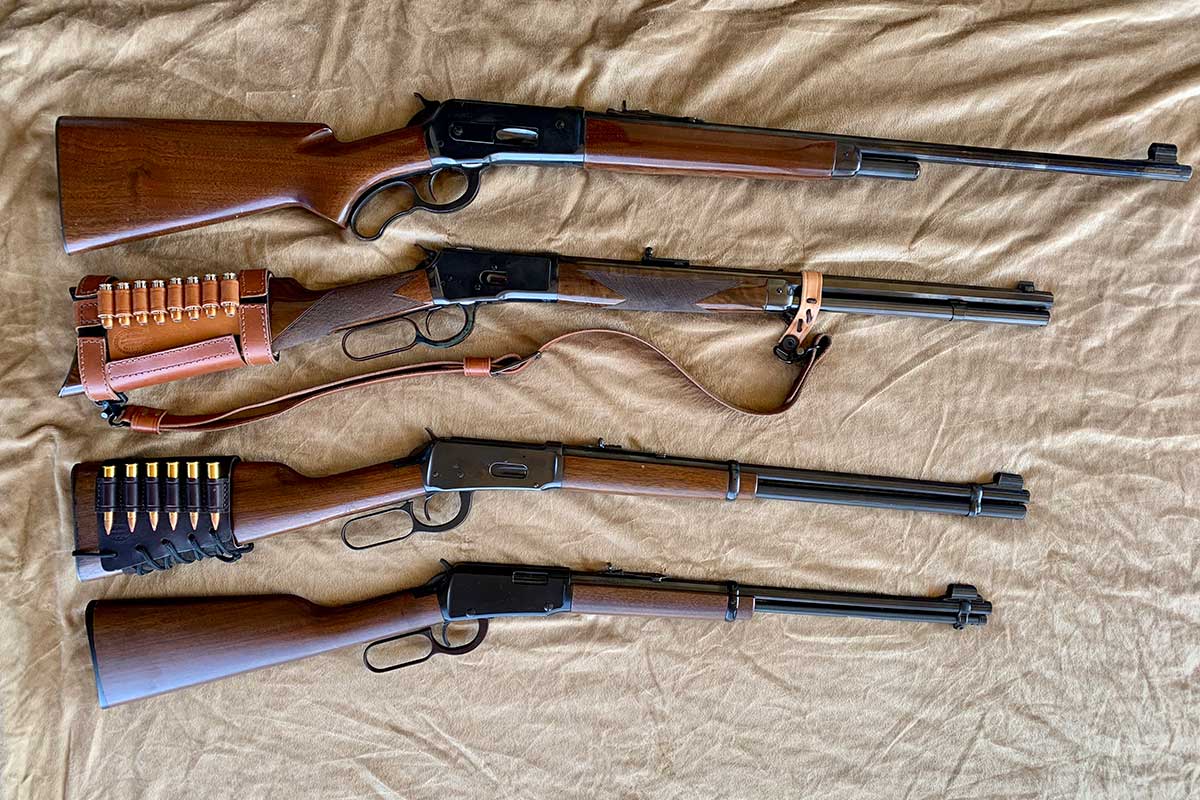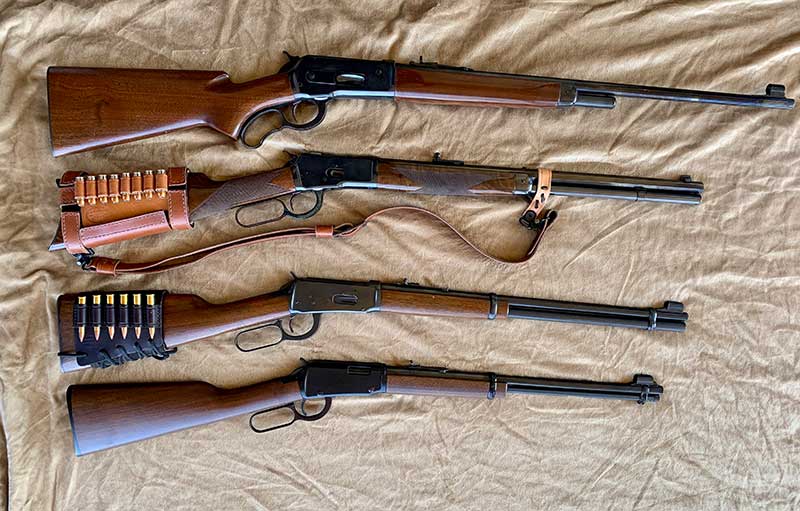
My favorite lever guns are a Winchester Model 71 in .348 Winchester, a Model 92 in .45 Colt, a Winchester Model 94 in .30-30 Winchester and a Henry Classic in .22 Long Rifle. I’ve hunted with all four for game, ranging from feral hogs to rabbits, and I have trained with the Model 92 and Model 94 at Gunsite.
The .22 also serves as a good sub-caliber trainer for its bigger bothers in addition to being good clean fun.
PRACTICAL USAGE
One reason the lever-gun remains popular for those on horseback is that it’s thinner than any other design. It also has less height and does not require the mounting of scopes, red dots, lasers and microwave ovens to get the job done.
When riding fence a Winchester Model 94 went with me, snuggled into my saddle scabbard. Unlike the movies, when I was actively working cattle the rifle came off as there was too much of a chance my rope may catch on the stock and cause a wreck in the corral—something to be avoided around sharp horn Brahma-cross cows.

Typical Buckhorn sight (top) is adequate, but the Skinner Sights ghost ring is faster to pick up under speed and increases accuracy.

Although the Henry Classic (bottom) does not have a side loading gate, it still serves well as a sub-caliber trainer.
TECHNIQUE
Unlike what is portrayed in movies, the lever-action (like bolt-action rifles) should remain on the shoulder while the action is worked. Lowering it and then bringing it back into the shoulder takes more time to reacquire the target.
That extra time may result in not getting a follow-up shot on game or, if used in a defensive role, allow a bad guy to put more holes in you than you were issued at birth. With little practice rounds can be placed on target quite quickly with a lever gun.
The addition of a ghost ring sight from Skinner Sights will decrease the time it takes to get on target while increasing accuracy over the buckhorn type sights usually found on lever-actions.
AMMUNITION
For economical practice, I handload hard-cast bullets for both the Model 1892 and 1894. For the .30-30, I use 168-grain round nose, and for the .45 Colt I load 230-grain flat nose, round point, and 255-grain semiwadcutters. Even though hard-cast, I load the .30-30 to very moderate velocities to reduce the chance of leading the bore.
For years the standard loading for the .30-30 was a 158-grain round-nose jacketed soft-point bullet. Ballistically, it is on a par with the 7.62x39mm cartridge.
Only round-nose or flat-nose bullets could safely be used in the tubular magazine because, under recoil, a cartridge-loaded with a spire point bullet could ignite the primer of the next round in the magazine with disastrous consequences.
That all changed several years ago, when Hornady introduced the LEVERevolution® for lever-action rifles. The patented elastomer Flex Tip® technology of the FTX® and MonoFlex® bullets makes spire points safe to use in tubular magazines. The bullets feature higher ballistic coefficients and dramatically flatter trajectory for increased downrange performance.

Two styles of buttcuffs. Simply Rugged Holsters’ (top) has an integral sling. More traditional cuff from Andy’s Leather. Both attach securely to the end of the stock.

Top to bottom: Winchester Model 71, 348 Winchester; Model 92, .45 Colt; Winchester Model 94, .30-30 Winchester; Henry Classic, .22 Long Rifle.
They are available in 140-grain (Mono-Flex) and 160-grain (FTX) weights and are suitable on big game up to and including elk, breathing new life into the over century old cartridge.
When hunting with the Model 71, I normally just place an extra half-dozen rounds in my pocket. The Model 92 and Model 94, however, often ride in my truck for defensive purposes as well as for critter control. With that in mind they both have butt cuffs for quick access to reload.
One word of caution on butt cuffs: make sure it is attached in such a way that it will not slide forward and interfere with the functioning of the rifle. A cuff sliding forward cost me winning a man-against-man shoot-off at Gunsite. In the real world it could have cost me much more…
It’s high time to bring “Grandpa’s rifle” out from the back of the safe and put it to use. Lever-actions rifles remains viable for most any task you choose to use it for.
SOURCES
ANDY’S LEATHER
(603) 630-4072
www.andysleather.com
SIMPLY RUGGED HOLSTERS
(928) 227-0432
www.simplyrugged.com
SKINNER SIGHTS
www.skinnersights.com